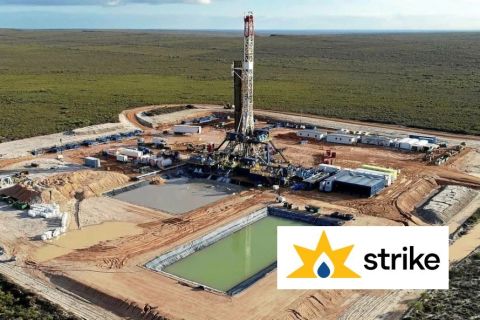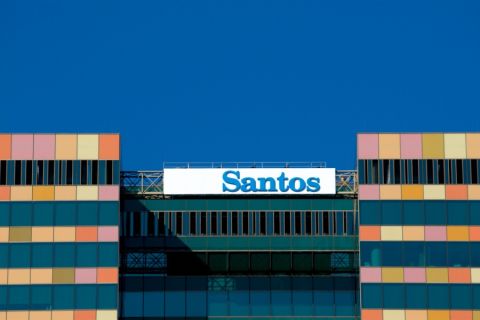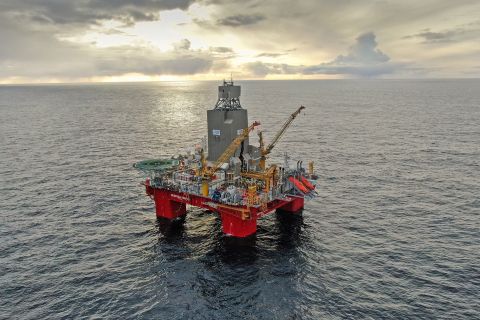Presented by:

[Editor's note: A version of this story appears in the February 2021 issue of Oil and Gas Investor magazine. Subscribe to the magazine here.]
Much like The Beatles’ Paul McCartney sang in 1970, U.S. oilfield services (OFS) companies have “seen this road before,’” but the climb from the bottom of the 2020 version of the historic oil patch trough feels extra daunting—a road paved with uncertainty. The service industry was collateral damage of the unprecedented combination of excess supply and crippled demand that waylaid its client base at a time money was fleeing the industry and a global pandemic was settling in.
As of December 2020, the U.S. land rig count stood at 308. That tally is up from the year’s low point that dipped below 200 during the summer, but it remained just 40% of the total active land rigs from a year earlier.

The decrease in activity has, of course, led to less need for oilfield services. The plunge in services demand has forced many to take drastic cost cutting measures including spending freezes for R&D, product line suspensions and headcount reductions. The services business has been hit hard by layoffs, with estimates of job losses in the tens of thousands. The state of Texas alone lost around 60,000 OFS jobs between April and October 2020, according to estimates from the Petroleum Equipment & Services Association.
A steady flow of bankruptcies has rippled through the OFS pool since the beginning of 2020. According to a Haynes and Boone LLP report, there were around 60 new OFS bankruptcies through the first 10 months of 2020, compared to about 20 new filings in all of 2019. Some of the OFS companies that have sought bankruptcy protection in 2020 include McDermott International, Pioneer Energy Services, BJ Services, Calfrac Well Services and Hi-Crush, as well as offshore drillers Noble Corp., Diamond Offshore and Pacific Drilling.
“I’m surprised we haven’t seen more [bankruptcies] frankly,” said David Anderson, senior equity analyst for oilfield services with Barclays. “We do see a number of companies that have been right on the edge for some time now, and we’re watching the debt maturities closely. We’ve changed our coverage. We’ve reduced our coverage, dropping a number of names just because some players have gotten so small that they are essentially irrelevant.”
The current market stresses have created a proliferation of what some have termed “zombie” companies in the OFS sector. These are service providers that are highly cash impaired and loaded with debt. While many E&Ps in this condition have taken the bankruptcy plunge, some believe there are still holdouts on the services front that will eventually fall.
“We’re probably midway through [the bankruptcy cycle],” according to James West, senior managing director, oilfield services, at Evercore ISI. “We’ve had a large number of bankruptcies, but there are more to come. Most management teams have engaged with lenders at this point. Maybe they haven’t filed for Chapter 11 or Chapter 7, but that is kind of a formality at this point.”
Market improvements for 2021 are in the cards, but the bar for improvement is low, and many forecasts are tempered and contingent on oil price stability. Spears & Associates estimates the U.S. OFS market to be around $34 billion in 2021, down about 10% from 2020 estimates of $37 billion. That compares to spending of $99 billion in 2018 and $90 billion in 2019. About half of the estimated spend in U.S. land OFS is predicted to occur in the Permian and Eagle Ford basins.
“There will be less capital to go around, which means there will be less drilling activity and less fracking, so we think a new normal for the market would be around 450 rigs and maybe 150 to 175 frac spreads, which of course is well below the 800 to 1,000 rigs and 300-plus fracking units from the past peak,” said West.
Adapt or die?
The constriction of the market is expected to force the hands of companies in all but the best financial shape. Bankruptcies will come, but there will also be firms that are pressured to take a good hard look at their existing services and prune those that no longer offer the best results to the bottom line. Product lines can be sold or simply discontinued. Services providers will need to take the necessary steps to set themselves up for the best outcome once the market shows sustainable signs of life.
“I think we are in an adapt-or-die situation, and people need to reset their expectations for what’s possible,” said Dan Eberhart, chief executive officer at service provider Canary LLC. “To me the headwinds are very fierce on access to capital and pricing leverage with our customers. Also, there’s the coming storm of the climate change movement and the push to move to renewables on the horizon as well. The confluence of all that is a toxic mix of economic headwinds for the OFS sector.”
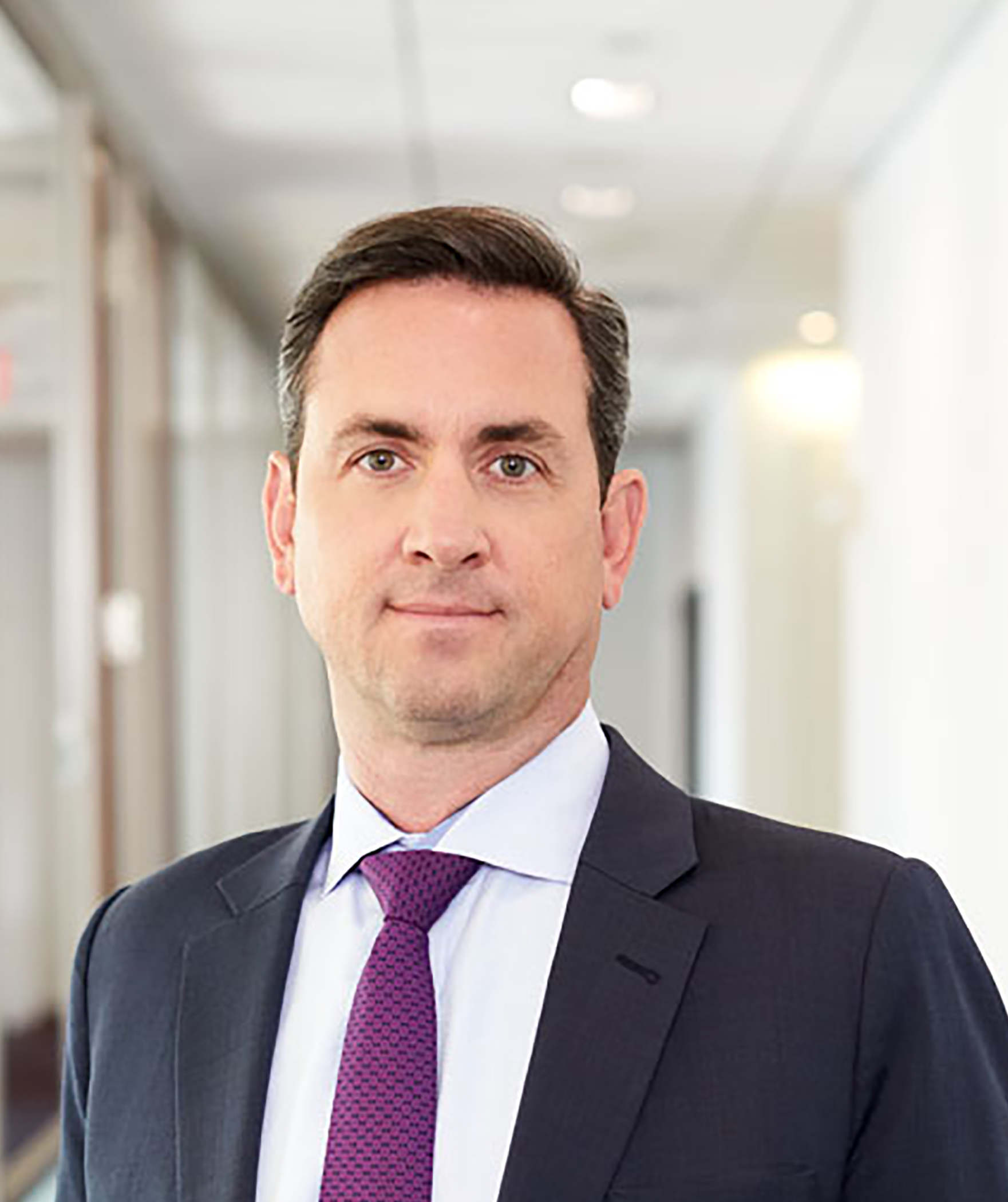
Early indications from E&Ps signal that they will spend around 70% of cash flow in 2021. That level of investment is designed to keep activity and production flat. By comparison, pundits estimated producers spent around 89% of cash flow in 2020. With not much left to give on the pricing side, services companies will need to feed aggressively into operator efficiencies in order to keep production levels from dipping further.
“The dirty secret of all this was that this industry was headed down this path well before COVID-19 hit in March,” said Anderson. “This really is a necessary purge that has been building over the last several years. Fifty-dollar oil doesn’t work for most shale plays in the U.S., which is why so many small-cap E&Ps and private E&Ps have really struggled.
“Likewise, you are seeing service businesses contract because they shouldn’t have been there in the first place. Compared to 2019 levels, the U.S. market will probably only recover to about 70% of the size it used to be in terms of upstream spending. We think that about 2 million barrels per day of production is permanently impaired.
“The challenge going forward for the oil companies is finding ways to squeeze out more efficiencies,” Anderson said. “They will have to get much better to bring costs down and increase cash flow.”
Tens of billions in asset write-downs have ravaged the operator side of the business. At the end of 2020, majors took turns wiping their ledgers clean of uneconomic assets—ExxonMobil Corp. ($20 billion), Royal Dutch Shell Plc ($22 billion), BP Plc ($17.5 billion), with more likely to come.
Services companies were by no means immune to the harsh reality of value adjustments. Schlumberger Inc. wrote down over $12 billion in late 2019, and additional restructuring costs are expected. Baker Hughes Co. took a $15 billion impairment charge in the spring of 2020, followed by a $2 billion write down by Halliburton Co. a few months later.
“Services companies, similar to E&P companies, have been reckless with capital expenditures, added way too much equipment to the market, and we’re going through a horrific downturn, but the other side of this is not going to be that great either,” said West. “As the E&P companies have learned, or have been told by their shareholders, they must live within cash flow and they must return some of that cash flow to the stakeholders.”
With the pressures applied by an abysmal oil market, many of the bigger, international producers have taken the opportunity to up the ante in renewables by announcing plans for strategic investments in wind, solar, hydrogen and other nonhydrocarbon fuels that await on the other side of the energy transition.
BP said last fall it would push toward renewables, leaving some of its conventional oil and gas assets behind. Pledges by Shell, Repsol, Equinor and others are all aimed at boosting renewables production over the coming decades.
What about the services sector? Should traditional OFS companies look to adapt and embrace the energy transition with new product lines and offerings that cater to that work?
Richard Spears, vice president of oilfield research firm Spears & Associates, once served on the board and in the ownership group of a company that for years was the biggest pipeline engineering company in America, he said without directly identifying the company. “We had the Keystone XL pipeline, which ultimately didn’t get built. In the process of having this world-class pipeline engineering company, we said, ‘You know, we ought to expand into wind energy too.’”
The firm bought a large wind farm engineering company, “and it was like a bunch of French guys trying to speak Swahili,” he said. “We were both speaking a common language, but we were not communicating. It was not good at all, and yet both companies were engineering companies. The metrics and the needs for both of those divisions were so different that it would have been better for them to be two totally separate organizations and not managed by a single ownership group.”
The challenge of an OFS company with multiple product lines is that each one can behave differently with a slightly different customer base and a slightly different geographic footprint. Trying to run that type of business in the oilfield is a full-time job for the management team. A good directional driller or a top-notch hydraulic fracturing service company would not necessarily make the best solar panel distributor, he said
“Stick to your knitting,” added Spears. “Be the last guy standing.
“I look at these calls for oil service companies to beware—‘You are a dinosaur, and you should participate in the greening of the globe’s energy portfolio’—and I think to do that requires them to either not be a good oilfield service company anymore or wholly abandon their oilfield service roots and just be something completely different. I don’t think they can be both.”
Too many players, not enough game
Calls for consolidation in the OFS sector have echoed through the alleys near Wall Street and down the halls of investment banks for years. The terrible trinity of a global supply glut, weak demand and an uncontrolled pandemic has placed unprecedented stress on the current bust cycle. Price erosion has made it difficult at best to maintain profit margins as operators continue to squeeze the most out of the hardware that is working for as little as it can.
“There are still entirely too many small companies out there competing for work at pricing levels that barely make any sense assuming a debt-free balance sheet,” said Canary’s Eberhart. “One of the things that I struggle with is the capex requirements to do what we do is 8% of revenue, 12% of revenue, something like this. It is impossible to do that in a 5% business. You’ve got to cover your cost of capital and make your return and feed your capex. The math just doesn’t work, and the math hasn’t really worked since 2015.”
Mergers in the OFS sector have historically been tough to justify. Putting two rig fleets together, for example, doesn’t change the total number of rigs available to the market. It simply changes the ownership of one set of those assets. The competitor is gone, but the iron remains. The same number of units will require the same number of workers, so there is little, if any, cost savings to be had at the field level.
The greatest savings in deals like this would come from G&A costs, bringing together each businesses’ office associates and middle managers and shedding some of those jobs. Even if the deals make good sense from an additive standpoint, be it complementary product lines or attractive geographical footprints, in today’s oil patch, there isn’t a lot of cash, or access to cash, to make deals happen.
“The only M&A that is getting done these days is where two competitors look at each other and decide to combine without swapping any dollars,” said Spears. “It’s just shares being folded together, so nobody is writing a check to buy the other’s shares. In a case like that you take two competitors and make them one.
“Even when you do that, you’re not doing anything to the capacity of the industry. For example, the Liberty/Schlumberger merger that is in the process of happening—it doesn’t do anything about eliminating capacity in the industry. Two sets of salesmen now become one, but there are still 40 other competitors out there seeking and bidding on the very same work. You would need 10 of these combinations before any sort of meaningful consolidation of the industry to have happened. Is there reason to do it? Yeah, there is.”
Demand for services has fallen roughly 75%, but there are still basically the same number of service companies out there all looking for work. The process of bankruptcy does not kill most companies; it simply transfers the ownership from its current group to the bank. Historically, according to Spears, not many service companies leave the industry during a downturn.
“Are there too many? Yeah,” he said, “there are too many companies chasing work. There are too many of everything, and that’s not going to be any better for the next year. That said, if you look at the levels of activity out in the field from now through next year, it actually rises a little bit. Frack activity rises. Drilling activity rises, on a quarter-by-quarter basis. Until you get rid of the number of competitors or you fill up the utilization of the existing competitors, you will still be working for really low prices. And how does anybody make any money like that?”
The U.S. rig count peaked at around 4,700 land rigs in 1982. By 1986, there were only 600 working. There were thousands of rigs— long-lived assets—weighing over the market. Today’s overcapacity exists mainly in pressure pumping, where hundreds of units are idle. However, these units are not long-lived and are generally considered to have a five- to seven-year asset life.
“I think the big analogy everybody should be looking at is 1986,” said Barclay’s Anderson. “This is not 2008 or 2014. This is 1986 again. The industry went through a transformative period for about 10 years after the 1986 crash. Over that time, a massive amount of overcapacity weighed on the market, and it took a long time to work down, which is why it took so long for this industry to fix itself.
“The difference, back then, was the overcapacity was primarily land rigs with long asset lives. This time around, the overcapacity is mostly in pressure pumping, which has comparatively short asset lives, so that gives me some hope. We’ll still have to go through the same painful process, but I don’t think it takes as long.”
For meaningful consolidation to occur you will need willing consolidators—companies, investors (and likely both) that will step in and aggressively match and marry companies looking for or in need of partners.
“We are sitting on a healthy cash balance, and we are actively pursuing M&A with ongoing opportunities and fielding new opportunities every day,” said Derek Nixon, president and chief executive at Varel Energy Solutions.
“The space is very exciting for us right now because we’re in that unique situation of fresh investment. This year has been tough, but it also has allowed us to focus on the things we want to be great at and the things we do very well. In turn, that allows us opportunity to bolt-on additional product lines that fit inside what we want to do in the downhole well construction space.
Nixon said he expects the OFS sector to “live within a consolidation phase” for some time, revealing opportunities for companies to build synergies and ultimately create more value for customers and shareholders.
“Varel will be extremely active in building stronger capabilities, but new deals must positively contribute with cash flow and upside value. Diversifying the portfolio makes a lot of sense right now, but it has to be the right deal. We will not pursue new opportunities that don’t align with our core mission to become the leading value creator.”
Riding the digital wave
One way that pundits see OFS making meaningful strides toward the future of the oilfield is with the adoption of digital processes. These adaptions promise to simplify workflows and lower the cost of production while increasing recovery rates and making improvements to the company’s ESG scorecard.
Digital will be a key element driving the efficiency gains operators will desperately need to drive increasing production with fewer dollars.
In a 2020 report, Barclays said using digital for small improvements in each phase of the well lead to efficiencies and could create as much $150 billion in value to producers. A digital services market is starting to take shape with a mix of tech companies, OFS and start-ups; over the next five years, the report said that digital could lower the cost of production by more than $3 per barrel, and expectations were for the digital services market to grow to more than $30 billion annually from less than $5 billion in 2020.
“There are some interesting technologies emerging that can dramatically improve efficiencies, which is where digital comes into play,” said Anderson. “Oil companies will need to start adopting digital quickly to really move forward and meet their targets, otherwise they won’t be able to compete. In oilfield services, we believe providing digital services in software, measurements or edge computing will be critical to outperformance, whether it’s applied in drilling, completion or production.
However, Anderson also sees a host of companies tied to more commoditized services, the so-called “dumb iron” that is highly capital intensive.
“That’s a train wreck, particularly if you’re a company with a sizeable debt load. We’ll see a shakeout over the next two to three years. The ones that remain will be the most efficient service companies with differentiated businesses and low debt. Those will be the survivors.”
SIDEBAR:
Production Wise

Ambyint is a digital-heavy, next-gen oilfield technology company that specializes in well optimization. It utilizes digital and advanced analytics to assist operators in maximizing well rates of return. The company is driving plug-and-play analysis of its software to tell when a well is underperforming, identify what changes will optimize well performance and provide change automation improving efficiency.
“There is nothing more efficient from a capital deployment perspective than getting incremental hydrocarbons out of a well you have already drilled,” said Ambyint CEO Blake McLean. “Where we sit in the value chain, at the wellhead, on the production side—that is an ideal place because, regardless of how many new wells are drilled or what the rig count or frac fleet utilization looks like, it will always be beneficial for operators to maximize the efficiency of wells they already have on production. Our ability to do that is proven in every major North American basin today. We like where we sit and are bullish over the next few years of constrained industry growth.”
The company is in a unique position given the current state of the industry. Trying to get operators to apply a new bit of tech can be a challenge in the best of times; however, when efficiency mantras echo throughout operators’ quarterly results calls with their investors, there may be no time like the present for a test drive.
“We’ve seen it break both ways,” said McLean. “We’ve seen folks say they have to run a tighter business sorting out margin-leaking operational practices, and they are willing to spend some money on the front-end to do that. We’ve also seen folks recognize the need for greater efficiency but feel constrained in terms of capacity or hamstrung by broad cost-cutting policies.”
One of the challenges this year is deals getting pushed to the right due to general market uncertainty—primarily deep budget cutting, volatility in commodities prices and organizational uncertainty, he said. “The good news is that toward the end of the year, we’ve seen this turbulence diminish as operators settle into a new normal. Wells that were shut-in are mostly back online. Deals that went dormant at the start of this downturn have also started to come alive again. Getting more from producing wells for less is clearly the new operating norm.”
Ambyint had seen some price erosion initially, but it has developed more flexible pricing options allowing operators, for instance, to rent versus strictly hit a capex budget. Even as properties continue to change hands via bankruptcies or mergers and acquisitions well into 2021, the company finds comfort in the fact that good assets will produce and that efficient operations will continue to be a priority regardless of ownership.
“The equity holders may change, but good, core assets are going to continue to produce hydrocarbons for a number of years,” said McLean. “Longer term, that’s great for us. It doesn’t really matter who owns them. We can add value. In the near term, when companies are working their way through bankruptcy or a change in ownership structure, investments and decisions may slow. But many operators get the fact that optimized, efficient wells bolster value and can benefit purchase decisions.”
An adversary takes the reins
As of January 20, the U.S. has a Democrat in the White House. A dizzying and tumultuous election season has resulted in former Sen. Joe Biden becoming the 46th president of the United States. Historically, a Democratic president has never been a good sign for the oilfield, but it also is hardly a death knell. The new administration isn’t expected to be friendly to the oil and gas business, but pundits believe that he understands the role oil plays in the nation’s security, labor markets and economy overall.
“I don’t think he is going to declare an outright war on the oil and gas business; however, the EPA [Environmental Protection Agency] could be ‘weaponized’ somewhat and put methane back in as a pollutant in the Clean Air Act,” said West. “They want to stop flaring and, frankly, the E&Ps would like to stop flaring too. There is just no export for the gas. I think the EPA might get a little tougher to deal with. More stringent. You’ve seen companies exiting Alaska. You’ve seen a rush to get permits on federal lands in case they decide to ban fracking on federal lands. They can’t do a whole lot on state lands.”
“There was a big report that was due out on fracking, and it never made it out,” recalled Anderson. “I think there will be a rebuilt EPA. That’s where the issues may come, but I think that is going to take a while.”
In more recent years, unfriendly regimes have not done too much harm to the oil and gas business. In 1993, Democrat Bill Clinton took over the highest office in the land. In 2009, there was Barack Obama. Earlier this year, President Trump handed over a devastated industry to President Biden.
“The Obama event is probably the most similar to the one we’re facing right now,” said Spears. “At the very end of the George W. Bush eight-year period, the entire global economy had collapsed, and the oil industry was rocked back on its heels and was facing the worst down year it had ever faced to that point. Barack Obama, who is not friendly to the oil and gas business, came in [to office] yet the oil industry, over 2010 to 2011, got back up to the same level it had been when George W. Bush was in his heyday for the oil and gas industry, and it stayed there for four years.”
While Biden is a known proponent of renewable resources, the drum still beats in the background that the world needs hydrocarbons and will need them in quantity until such a time that alternative fuels are ready to take over the brunt of energy demand.
“The world wants hydrocarbons,” said Spears. “It wants them now, and it wants them in huge quantities. Every transition estimate you see, transitions to solar, wind, whatever, all of those supply numbers are 10 to 15 years in the future. The problem is, people need to boil their eggs and cook their biscuits today. So, the beast is incredibly hungry for hydrocarbons. The oil and gas industry in the U.S. is going to do fine in about two years. You just have to get through in the meantime.”
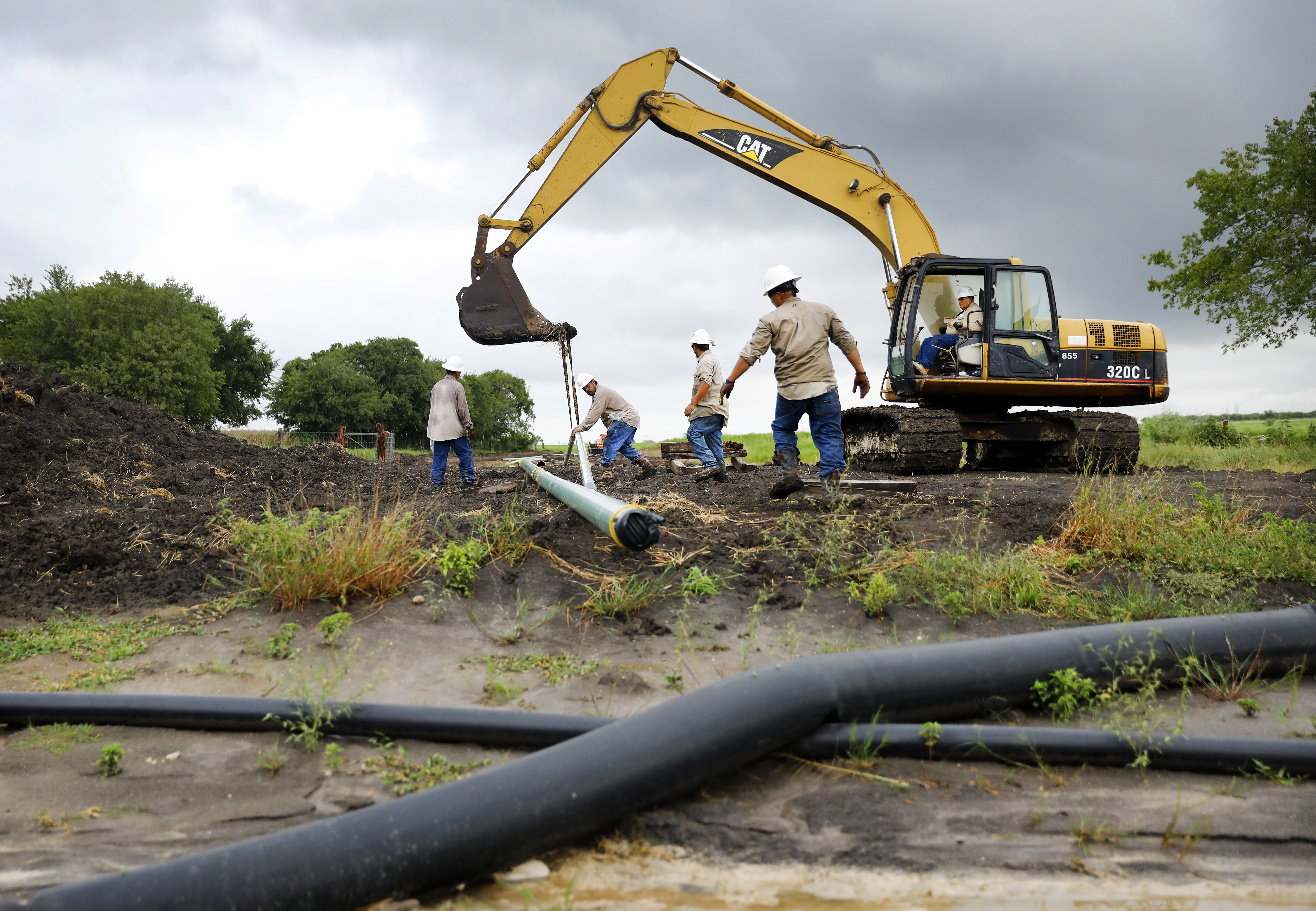
Bracing for better days
The meantime will be a prolonged period of razor thin margins, an uncertain regulatory climate and commodity price levels that challenge the economics of many projects across the Lower 48. These factors, coupled with the industry’s impaired access to capital, mean it will be difficult over the coming years for service companies to grow, whether through adding product lines via acquisition or full-scale merger.

“I see it getting incrementally better, but man, it’s a tough road out there,” said Eberhart. “I worry about pricing leverage, access to capital. I feel like capex requirements have increased as returns have decreased since 2014. All of that together just makes me feel beleaguered. We’ve got to be nimble, and we need to reset expectations for what is possible. The profitability that you wanted or expected may not be there. We’ve got to have more consolidation, and [regarding] the leverage between the operators and the oilfield service companies, the pendulum has got to swing back a little bit to favor the service companies.”
Some contractors are using this time to reorganize and restructure their businesses, which will leave them more efficient and better suited for the industry turnaround. Varel used this time to reposition its business and bring its legacy downhole products and drill bit businesses together. With sales down and manufacturing overheads going up, the company rededicated itself to going above and beyond for its customer base and giving operators one less thing to worry about.
“What has worked in the past isn’t necessarily what is going to work moving forward,” said Nixon. “We have to be a lot more creative in our approach to the market.”
“We have to understand where we want to play and who we want to play with, so to speak,” he explained. “You can’t go out there and be everything to everybody anymore. I think it’s important that we’ve taken some time to understand our core competencies, which is in the manufacturing space and on the customer service and delivery side of the space as well. Keying in on those is where our purpose and vision comes from.”
As most contractors know, pricing can be very quick to go down when things go bad but slow to rise when the market improves. In order to preserve profit margins, service companies must at times look inward to their own supply chains and move to coax savings from that with possibilities ranging from things as challenging as more efficient manufacturing to obvious measures such as field logistics.
“Everybody has good products these days,” said Nixon. “It’s a very competitive landscape. By delivering that superior experience, we find that customers are inclined to meet your price expectations.”
Varel has shrunk from a people standpoint during 2020 but is still covering the same markets. Once the two business units were combined, the company found redundancies at the manager level.
“It’s about figuring out how to do more with less,” said Nixon. “When you try to get somewhere in a spaceship, let’s say, you move in a straight line, but there are thousands of little adjustments every day that allow you to get there. It may look like a straight line, but a line is never that straight.
“We have to be aware that we are in a fluid situation, and we’ll constantly adjust our plans based on what we’re seeing. I firmly believe that whoever adjusts fast enough and continues those adjustments will come out of this better. Positivity is out there.”
Those closest to the industry see things getting better by the second half of 2021 for North America, with international markets to follow. By the summer, pundits see most of the restructuring processes complete and companies rightsized to the point of restoring some profitability. The process has been and will continue to be painful, but with each passing day the levels of optimism rise that the light at the end of the tunnel isn’t the front of an oncoming train.
“It is really just about the simple block-and-tackle things—keeping your costs low, trying to be as razor-sharp competitive as possible and being extremely choosy about capex spending,” said Eberhart. “The small things [are critical]. I don’t think this is a time for grand strategy or big strategic moves. I think the market dictates being more humble and more patient and more conservative right now.”
Recommended Reading
US Drillers Add Oil, Gas Rigs for First Time in Five Weeks
2024-04-19 - The oil and gas rig count, an early indicator of future output, rose by two to 619 in the week to April 19.
Strike Energy Updates 3D Seismic Acquisition in Perth Basin
2024-04-19 - Strike Energy completed its 3D seismic acquisition of Ocean Hill on schedule and under budget, the company said.
Santos’ Pikka Phase 1 in Alaska to Deliver First Oil by 2026
2024-04-18 - Australia's Santos expects first oil to flow from the 80,000 bbl/d Pikka Phase 1 project in Alaska by 2026, diversifying Santos' portfolio and reducing geographic concentration risk.
Iraq to Seek Bids for Oil, Gas Contracts April 27
2024-04-18 - Iraq will auction 30 new oil and gas projects in two licensing rounds distributed across the country.
Vår Energi Hits Oil with Ringhorne North
2024-04-17 - Vår Energi’s North Sea discovery de-risks drilling prospects in the area and could be tied back to Balder area infrastructure.

